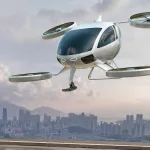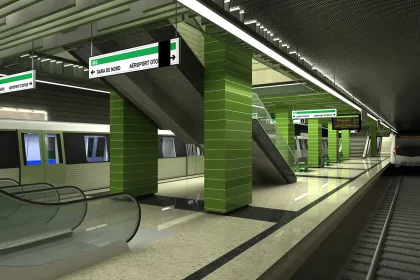Prajeev Rasiah, Executive Vice President & Regional Manager of DNV GL, talks to us about the importance of prioritising sustainable solutions to the company.
- Q&A WITH PRAJEEV RASIAH, EXECUTIVE VICE PRESIDENT & REGIONAL MAMAGER, DNV GL
- What are DNV GL’s major growth areas in the EME region? What key trends are you identifying?
- How important are smart cities becoming to the infrastructure of cities throughout Europe and the Middle East?
- What, for you, defines a smart grid? How important are these to the success of a smart city?
- Tell us about DNV GL’s work in this area. What expertise do you offer?
- Can you state and describe any successful project examples?
- How important are technologies like blockchain and AI to DNV GL in this area?
- How do you see technology advancing in the coming years to boost smart grid/energy provision?
- If you had to pick a leading example, anywhere in the world, of a smart city, what would it be and why?
- Any concluding comments you wish to make on the future of energy?
That cities need to become smarter and countries greener is no new train of thought.
The Paris Agreement of 2015, adoption of which is widely accepted as necessary to avoid future climate catastrophe, sets out plans to keep long-term global warming well within two degrees Celsius.
Scandinavian nations are among the most visibly committed to holding up their own end of the bargain. Shortly after the Paris accord was struck, Norway placed in law a commitment to ban the sale of petrol and diesel vehicles by 2025 in a bid to go 100 percent electric.
This is just one way in which countries are looking to cut emissions, with smart city and energy policies also important in moving towards meaningful carbon reduction. In the Norwegian private sphere, DNV GL is one organisation at the forefront of this movement both at home and abroad.
Prajeev Rasiah is Executive Vice President & Regional Manager (Northern Europe, Middle East and Africa) for the Company, responsible for operations in the UK, Ireland, Nordics, Baltics and Benelux areas, and UAE, Saudi Arabia, Jordan, Egypt, Morocco, Oman and Israel.
“DNV GL is a global quality assurance and risk management company, driven by a purpose safeguarding life, property and the environment,” he explains.
“With origins stretching back to 1864 and 12,000 employees spread across 350 offices in over 100 countries, we provide classification, technical assurance, software and independent expert advisory services to the maritime, oil & gas and energy industries. We also provide certification, supply chain and data management services to customers across a wide range of industries.”
Discussing further his remit and observations on smart cities and smart energy infrastructure, Rasiah took time to answer our questions.
Q&A WITH PRAJEEV RASIAH, EXECUTIVE VICE PRESIDENT & REGIONAL MAMAGER, DNV GL
What are DNV GL’s major growth areas in the EME region? What key trends are you identifying?
Prajeev Rasiah (PR): In the next 30 years, the demand for electricity will grow, driven by the electrification of transport, buildings and the manufacturing sectors. According to our annual energy transition outlook, electricity’s share of the total energy demand is expected to more than double to 45 percent in 2050.
This surge in global electricity production will be powered by renewable sources accounting for an estimated 80 percent of global electricity production in 2050. As the costs for wind and solar continue to fall, those two energy sources are set to meet most of the electricity demand, with solar PV delivering 40 percent of electricity generation and wind energy 29 percent.
The Nordics, UK, Ireland and the Netherlands have either established or growing markets especially in the wind energy sector. In the Middle East governments and industries are increasingly trying to balance economic, societal and environmental needs. Electricity demand in the Middle East will triple by 2050, accelerating the growth of renewable energy and triggering the diversification of economies away from fossil fuels.
The rise of renewables will also see demand for supporting technologies, such as storage, and DNV GL forecasts a very significant growth in battery capacity installed specifically to cope with variable renewables: around 50 TWh by 2050.
How important are smart cities becoming to the infrastructure of cities throughout Europe and the Middle East?
PR: Smart cities will become increasingly important for supporting the changing energy landscape and the infrastructure this demands. Rapid electrification and the rise of electricity generation from wind and solar sources will lead to major expansion of electricity transmission and distribution systems both in the length and capacity of transmission lines.
At the same time, electricity generation and despatch are also increasingly moving from a centralised to a decentralised operation model.
Decentralised energy sources such as rooftop solar panels or individual wind turbines are an important part of the transition to a more sustainable energy future. They can help consumers manage what they use and reduce their bills as well as contributing to lower emissions. In the future, the growth of these resources will put additional pressure on electricity distribution infrastructure, which must be prepared to handle the secure, safe and reliable distribution of electricity
Smart infrastructure, including sensors, will be critical for analysing information about energy and help consumers and utilities to make better decisions. The future energy model means that consumers will be king. At DNV GL, we are helping cities to achieve this now by working with them, both to develop future frameworks and plans and help deliver innovative technological solutions that provide a stepped approach to getting there.
What, for you, defines a smart grid? How important are these to the success of a smart city?
PR: A smart grid can gather information from all parts of the grid, from transmission level to distribution level and consumer level (the latter using smart meters) and use this information to optimise supply and consumption. Smart grids are hugely important for the success of future cities, because as cities expand, infrastructure will struggle to keep pace. An electricity supply network that uses digital communication technology to detect and react to local changes in usage will enable us to plan better, meet demand and encourage sustainable energy use.
Tell us about DNV GL’s work in this area. What expertise do you offer?
PR: The success of smart grids will rely on the technologies deployed within them as well as this technology’s integration and compatibility with existing and future systems. We work with the energy industry to help them navigate smart grid interoperability standards and manage risks of deploying and integrating new technologies with existing assets.
To do this we’ve created a Smart Grid Interoperability Laboratory to provide the utility industry and key suppliers a platform for managing risk exposure, verifying business case projections, and securing a more effective and efficient smart grid deployment. We also support key players such as governments, regulators and distribution system operators in designing and implementing regulatory frameworks and mechanisms that facilitate the concepts of smart grids and smart cities.
Can you state and describe any successful project examples?
PR: A ground-breaking project was PowerMatching City, the world’s first real-life smart grid as well as a living laboratory that evolved into a Smart Green City project. The project ran from 2009 to 2015 and created an integrated smart grid solution, supporting 25 houses in the City of Groningen, in the Netherlands. The houses were equipped with small renewable energy generators, smart appliances, electric vehicle chargers and smart meters. Through the Powermatcher technology, connected households exchanged electricity on a real-time basis to realise energy bill savings, lower carbon emissions and facilitate local renewable generation. PowerMatching City indirectly led to DNV GL co-creating the Universal Smart Energy Framework (USEF) framework, which provides a common standard for smart energy systems to optimise the allocation of flexibility across the industry, while allowing maximum freedom of choice for all industry participants.
In the UK, DNV GL is on the verge of commencing an innovation project that seeks to develop a competitive market to enable flexibility as an economic alternative to manage distribution network operators’ constraints. The project will develop, implement, and trial the USEF framework, and will inform wider policy development around flexibility markets through the development of standardised industry specifications, processes, and requirements for transparent information exchange between market participants accessing market-based demand-side flexibility.
We also work on early stage smart energy projects designed to help change consumer energy consumption behaviours. This includes energy efficiency programme development and implementation and smart meter implementations globally.
In the Middle East, we’ve worked closely with various stakeholders in Saudi Arabia to develop a comprehensive understanding of power consumption patterns and trends across the Kingdom. This information will be used by Saudi government agencies to forecast future trends and develop appropriate planning methodologies.
How important are technologies like blockchain and AI to DNV GL in this area?
PR: AI can play a huge role in making cities and infrastructure smarter. Several of the projects we work on and solutions we develop for our customers utilise machine learning to make grids smarter. One such product is Smart Cable Guard, a data-driven online monitoring solution which locates and pinpoints faults and weak spots in cables. With an increasing number of renewables and smart electronics added to the electricity network, the power grid must cope with more dynamic stress each year to prevent outages. Digitalising operations using Smart Cable Guard results in up to 25 percent fewer failures compared to traditional methods. This, in turn, leads to cost savings and higher grid reliability.
Blockchain is currently not as advanced as AI but future changes such as the increase in peer to peer trading of energy will require technologies like blockchain to enable more efficient and secure economic exchange between participants.
How do you see technology advancing in the coming years to boost smart grid/energy provision?
PR: Smart energy technologies mean new opportunities to boost smart grid and energy provisions. As penetration of renewables increases, it’ll become much more important that multiple stakeholders such as utilities, distributed power producers, including “prosumers”, and independent system operators work together to address these new grid challenges.
The technology is already advanced enough to meet our needs, but so far cost and regulatory barriers have been prohibitive. As we deploy more of this technology the cost will decrease and this will push the uptake of renewables. When it comes to smart grids, the cost of sensor technology will reduce, and overlay technologies will further develop to make grids smarter.
If you had to pick a leading example, anywhere in the world, of a smart city, what would it be and why?
PR: Singapore is reaching beyond the ambition of becoming a smart city; it intends to become a ‘smart nation’. The two most important trends for Singapore are those of an ageing population, and an urban density of nearly 8,000 people per square kilometer – compared with 350-400 in countries like Japan and The Netherlands.
Singapore is pulling together its universities and medical facilities, research and development (R&D) investments, a fast-growing community of tech start-ups and investment capital in a remarkable collaborative effort. The government is powering these innovation efforts by putting in place standards to support innovation, establishing an island-wide high speed 1Gbps broadband access and wireless broadband infrastructure, making available some 11,000 governmental data sets, and hosting a ‘living lab’ to test new ideas and solutions for smart energy infrastructure, using sensor networks and big data and analytics technologies.
Examples of innovation initiatives include the trialing of a tele-health rehabilitation system enabling home therapy sessions and opening of a road network for autonomous vehicle trials. The government’s Smart Energy Community test-bed is part of the Eco-Campus programme based on experiences of the ‘PowerMatching City’ in the Netherlands. It will demonstrate customers’ use and business cases to enhance energy efficiency, maximise renewable energy integration, and develop new electricity market policies for Singapore’s future energy system.
Any concluding comments you wish to make on the future of energy?
PR: Despite the positive outlook on the expansion of renewable energy and the electrification of key sectors, the energy transition will not be fast enough to meet global climate targets. In fact, DNV GL found that the first emission-free year will be 2090, if the energy transition continues at the pace predicted in its report.
The good news is that the energy transition is achievable and affordable. However, the rapid transition we are predicting is still not fast enough to achieve the goal of the Paris Climate Agreement. If we are to decarbonise the world’s energy system at the required speed, we need to adapt and automate our electricity grids, and regulators and politicians will need to re-think, re-shape and take major policy decisions about market models.































